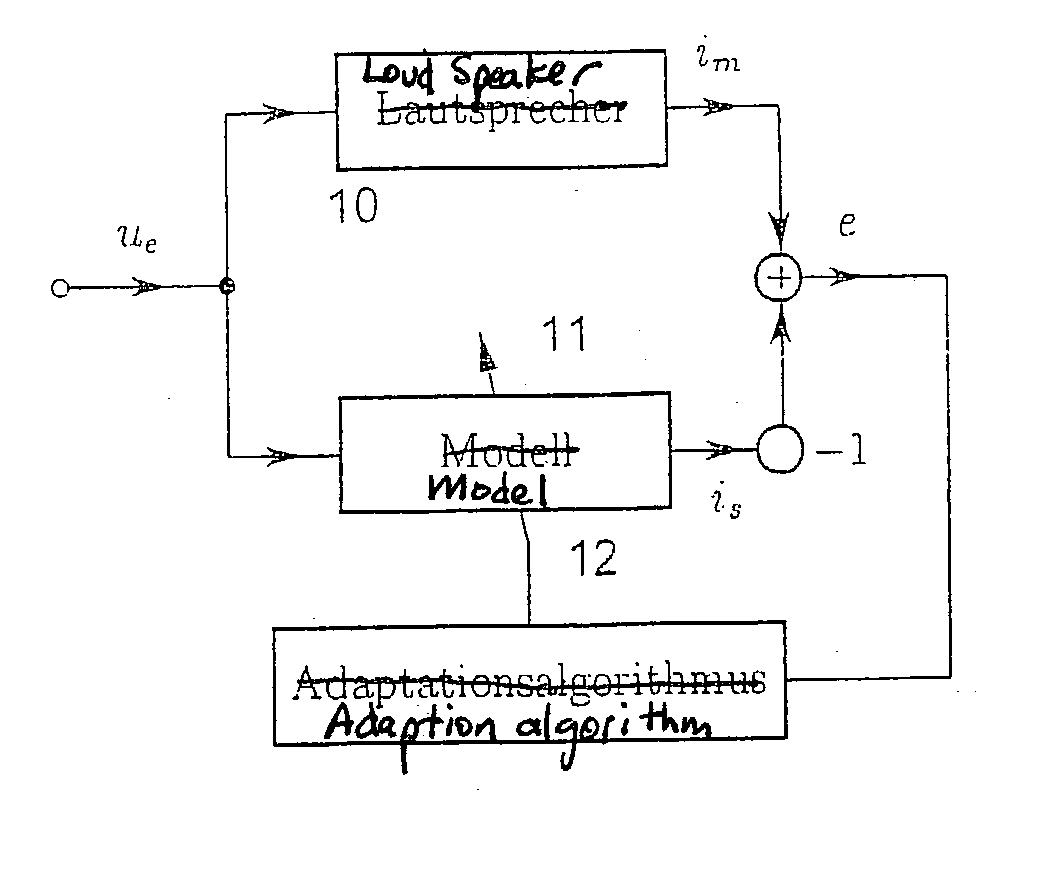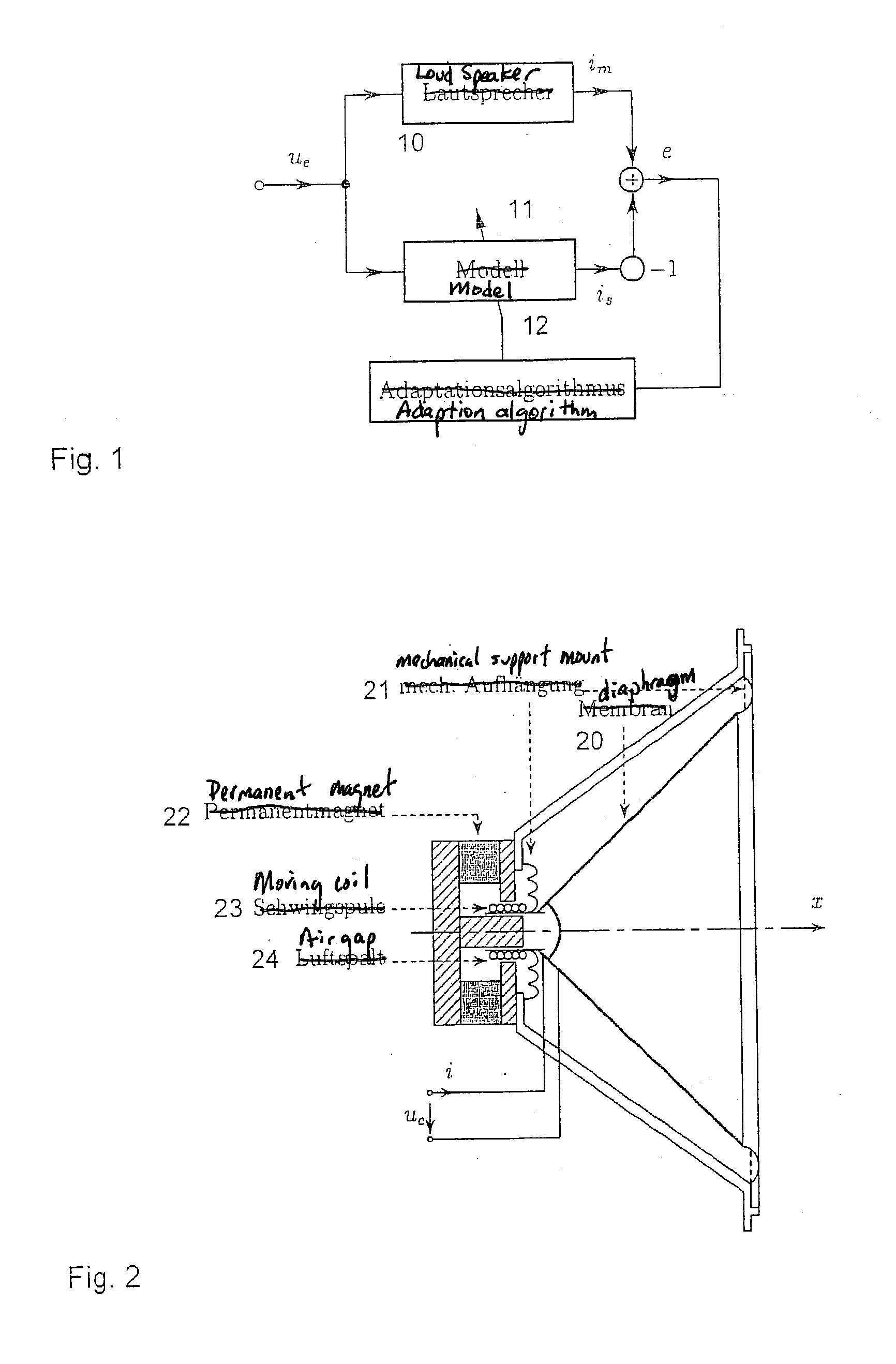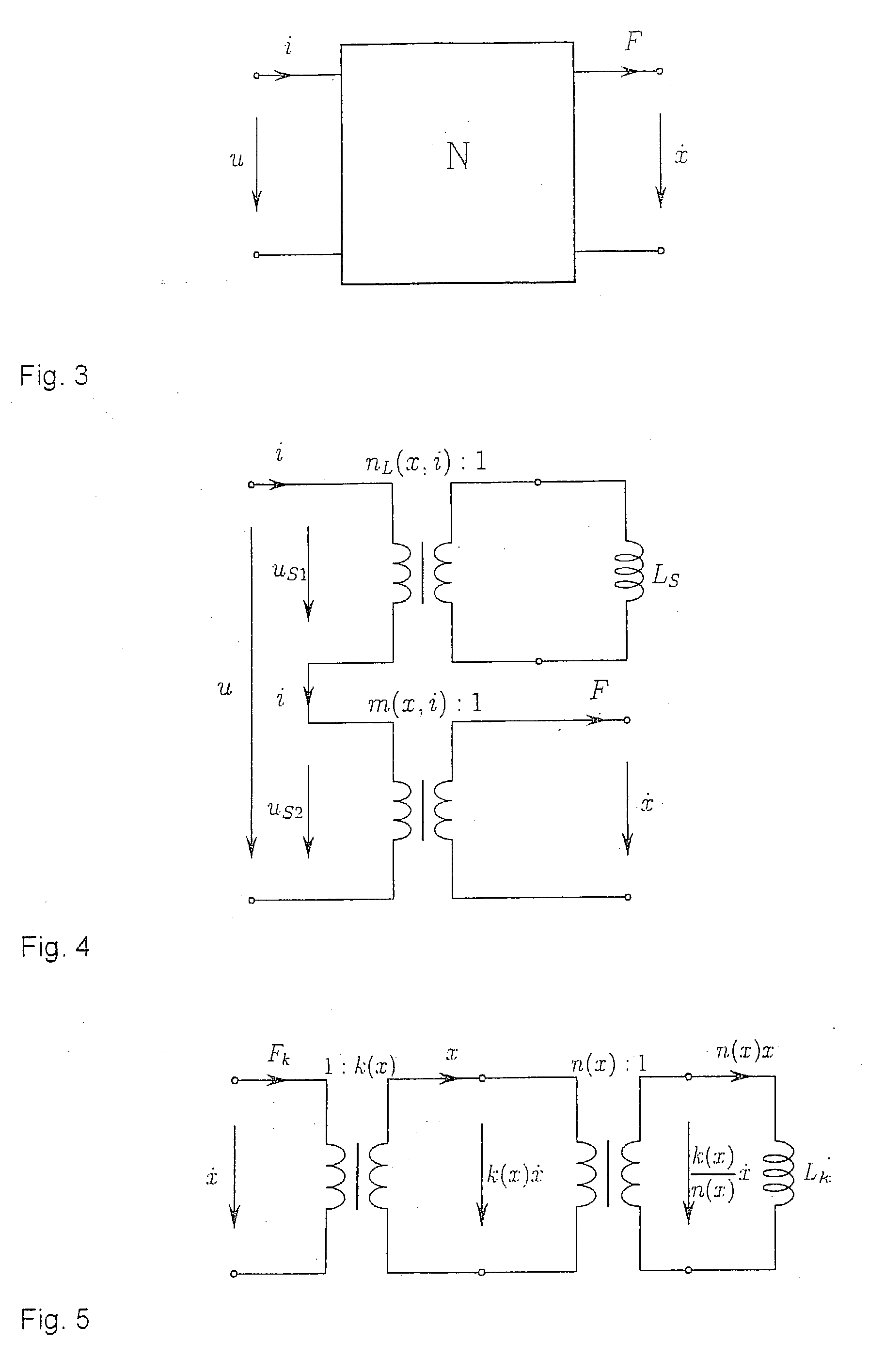Adaptive method for detecting parameters of loudspeakers
- Summary
- Abstract
- Description
- Claims
- Application Information
AI Technical Summary
Benefits of technology
Problems solved by technology
Method used
Image
Examples
Embodiment Construction
[0048] Reference was already made above to the fundamental necessity of understanding and modeling the transmission behavior of loudspeakers. Due to the parameter spread within one production series and due to the parameter changes that unavoidably occur in actual operation due to aging, temperature changes, and the installation of the loudspeaker, there is, in this context, a special need for an adaptive method, so that every loudspeaker can be measured separately, or the already determined parameters can be corrected. In this context, for the purpose of generating an error signal, it is not recommended to use an expensive deflection or sound-pressure measurement, but rather a simple measurement of the moving-coil current which arises in the case of the signals that approximate actual operation (colored noise) or that even represent actual useful signals. Using the method that is put forward here, it is possible, simply by measuring the moving-coil current, to determine the paramet...
PUM
 Login to View More
Login to View More Abstract
Description
Claims
Application Information
 Login to View More
Login to View More - R&D
- Intellectual Property
- Life Sciences
- Materials
- Tech Scout
- Unparalleled Data Quality
- Higher Quality Content
- 60% Fewer Hallucinations
Browse by: Latest US Patents, China's latest patents, Technical Efficacy Thesaurus, Application Domain, Technology Topic, Popular Technical Reports.
© 2025 PatSnap. All rights reserved.Legal|Privacy policy|Modern Slavery Act Transparency Statement|Sitemap|About US| Contact US: help@patsnap.com



